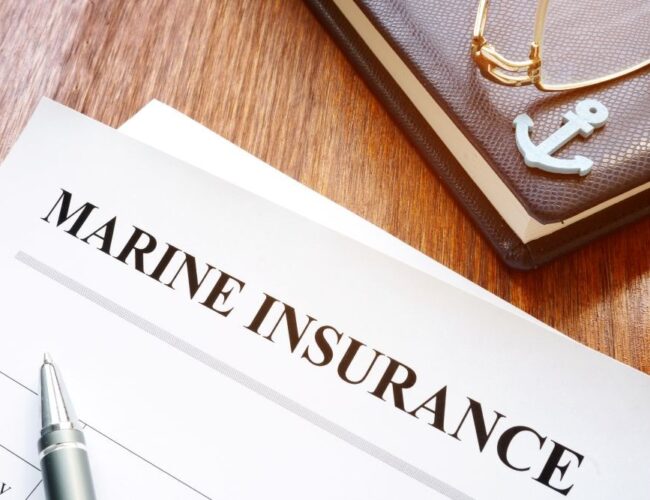
Running a maritime business comes with its fair share of challenges, and the sea is never short of surprises. Rough weather, damaged cargo, or sudden equipment failure can turn a smooth journey into a costly setback. That’s why choosing the right marine insurance is crucial.
Marine insurance gives you peace of mind knowing that your vessels, crew, and cargo are covered against the unpredictable nature of the ocean. But with so many options available, finding a policy that fits your business needs can feel overwhelming.
That said, here are a few tips to help you choose the best marine insurance coverage for your business:
Understand What Narine Insurance Covers
Before choosing a policy, it’s worth understanding what marine insurance actually covers. It protects your assets from marine-specific risks such as collisions, sinking, fire, or theft. It can also extend to goods in transit, meaning cargo being transported by sea. Depending on your business, you may need cargo coverage, boat insurance, or ocean marine insurance that includes liability for environmental or third-party damage.
Working with a reliable marine insurer or broker, such as Trident, can make this process easier. They can explain the difference between property insurance, damage coverage, and liability coverage in simple terms.
For instance, if you’re running a fishing fleet, your focus may be vessel protection, while a shipping company might prioritize marine cargo insurance. A broker can also help you compare custom policies designed to match your operations, helping you avoid unnecessary coverage gaps.
Assess the Risks Your Business Faces
You need to understand your business’s risks to choose the best coverage. Start by assessing your maritime activities and identifying where things could go wrong. If your routes cross rough waters, shipping risks may include storm damage or lost cargo. Smaller operators might face higher risks from accidents near ports or engine breakdowns.
A risk assessment can highlight areas where you need stronger protection. It can also help you determine what level of deductible makes sense for your business. This will help make conversations with the insurance company more productive and guide you toward the right policies.
Choose the Right Type of Coverage
Once you understand your risks, the next step is choosing the type of coverage that fits. There are several main categories of marine insurance, each with a specific focus:
- Hull and machinery insurance: Insures physical damage to the boat/vessel and its machinery.
- Cargo coverage or marine cargo insurance: Safeguards goods in transit from loss, theft, or damage.
- Freight insurance: Protects against potential loss of income if cargo doesn’t reach its destination.
- General and professional liability insurance: May extend to shore-based operations or business management risks.
- Protection and indemnity insurance: A P&I policy provides liability protection for injury, pollution, or other third-party claims.
Your coverage should reflect how you operate. For example, ocean marine insurance could suit long-distance shippers, while smaller boat owners might prefer boat insurance with strong damage coverage. A broker can help you mix and match these options so your policy feels complete without being excessive.
Review Policy Limits and Exclusions
It’s easy to assume an insurance policy covers everything, but exclusions and limits can make a big difference. Some insurance policies may not cover acts of war, piracy, or extreme weather unless added separately. Others may have low limits for high-value shipping containers or machinery replacement.
Before signing anything, take time to read your policy carefully. Ask your marine insurer or broker to explain any unclear sections. Understanding where coverage gaps exist can save you frustration later.
Also, explore custom policies or add-ons that better align with your maritime activities. The goal is to avoid paying for coverage that doesn’t truly protect what matters to your business.
Evaluate Premiums and Deductibles

Your premium is the amount you pay for coverage, while your deductible is what you pay out of pocket during a claim. Both can vary depending on your vessel’s age, safety record, and the value of your cargo. Businesses that follow strict safety measures may qualify for better marine or property insurance rates.
When comparing quotes, look beyond the price tag. A lower premium may come with higher deductibles or narrower protection. Ask each insurance provider what’s included in the rate and how claims are calculated. Balancing affordability with reliable damage coverage could help you maintain strong protection without stretching your budget too thin.
Keep Your Policy Up to Date
Maritime businesses evolve over time. Adding new vessels, expanding routes, or handling new types of cargo can all affect your risk profile. It’s a good idea to review your insurance policies annually and update them as your business grows.
If your company has reduced certain maritime activities or upgraded safety systems, notify your insurer. These updates might lead to more competitive terms or improved protection against potential business risks. Regular reviews also help you identify outdated coverage gaps or unnecessary add-ons that no longer fit your needs.
Conclusion
Choosing the right marine insurance comes down to understanding your risks and finding coverage that fits your operations. With the above tips, you can select a plan that may protect your vessels, cargo, and crew from unexpected losses at sea.
Remember, the cheapest option isn’t always the best one. Work with a trusted provider, review your policy regularly, and ensure your coverage grows with your business to keep your operations secure and sailing smoothly.